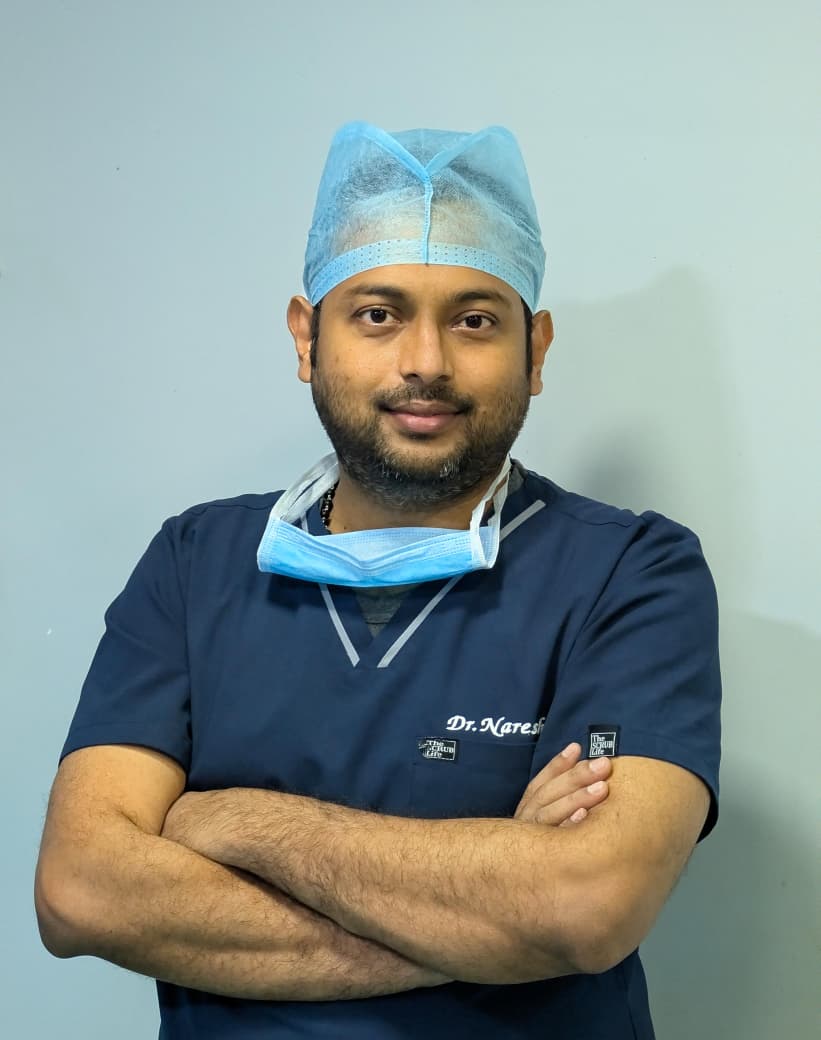Knee arthroscopy is a modern, minimally invasive surgical technique used to investigate and address various conditions within the knee joint. By making only small incisions, orthopaedic surgeons can accurately diagnose and treat problems such as torn cartilage, ligament injuries, and joint disorders, facilitating a faster recovery and reduced discomfort. If knee pain or dysfunction is hindering your everyday activities, reach out to HeptaCare Health. Our skilled team of orthopaedic specialists employs cutting-edge arthroscopic methods to help restore your mobility and enhance your quality of life. Schedule your consultation today for expert care tailored specifically to your needs.
Happy Patients
Disease
Hospitals
Cities
Knee arthroscopy is a surgical intervention that enables orthopaedic specialists to view the knee joint without making a large incision through the use of an arthroscope, a type of endoscope that is inserted into the joint through a small cut. Performed by orthopaedic surgeons, this procedure is typically recommended when less invasive treatments have failed to alleviate joint issues.
It offers crucial benefits, such as reduced healing time, decreased risk of infection and complications, and minimal scarring. These advantages make it a preferred option for patients needing a faster recovery to resume their daily routines and physical activities.
Here are the common types of knee arthroscopy:
Before proceeding with knee arthroscopy, a thorough diagnosis is essential to determine the precise nature of the knee problem and to plan the appropriate surgical intervention. Here’s how specialists typically diagnose conditions warranting knee arthroscopy:
These diagnostic methods are crucial for planning effective treatment and ensuring the success of the knee arthroscopy, tailored to each patient’s specific needs.
This technique involves smaller cuts than traditional knee surgery, leading to potentially quicker recovery times. Here is a step-by-step breakdown of what one can expect during the procedure:
Determining the right candidate for knee arthroscopy is crucial for ensuring successful outcomes. This section outlines the eligibility criteria for the procedure:
These criteria help ensure that the benefits of knee arthroscopy will outweigh the risks, allowing patients to return to their pre-injury level of activity and functionality.
Knee arthroscopy offers several advantages over traditional open knee surgery, primarily due to its minimally invasive nature. This procedure allows for quicker diagnosis, treatment, and recovery, with reduced trauma to the knee joint and surrounding tissues. Here are the detailed benefits:
Preparation for knee arthroscopy is crucial to ensure a successful outcome and minimise the risk of complications. Here are the steps to prepare for the procedure:
The recovery process following knee arthroscopy can vary, but certain steps can aid in a swift and effective recovery:
These recommendations are essential to ensure a smooth and quick recovery, helping patients return to their usual activities as soon as possible.
While knee arthroscopy is generally considered a safe procedure, as with any surgery, it carries certain risks and potential complications. These complications are rare but can occur:
The knee arthroscopy cost in India varies widely, depending on various factors. The following points impact the overall cost:
In India, knee arthroscopy is generally covered by health insurance when deemed medically necessary, which typically involves cases where the patient experiences ongoing knee problems that have not responded to non-surgical treatments. Coverage usually includes the surgery itself, anaesthesia, hospital charges, and essential post-operative care.
However, it may not cover advanced surgical techniques or certain disposable items used during surgery if deemed non-essential. Insurance policies vary, so patients should consult with their insurer to understand specific coverages and exclusions related to knee arthroscopy.


Based on 7721 Recommendations | Rated 4.68 Out of 5
Happy Patients
Clinics
Cities
Surgeries
Doctors
Hospitals
Getting an accurate diagnosis can be one of the most impactful experiences that you can have.

cure with care
Copyright © 2025. All rights reserved.
Consult with our expert surgeon for more than 50+ diseases
Happy Patients
Hospitals
Cities